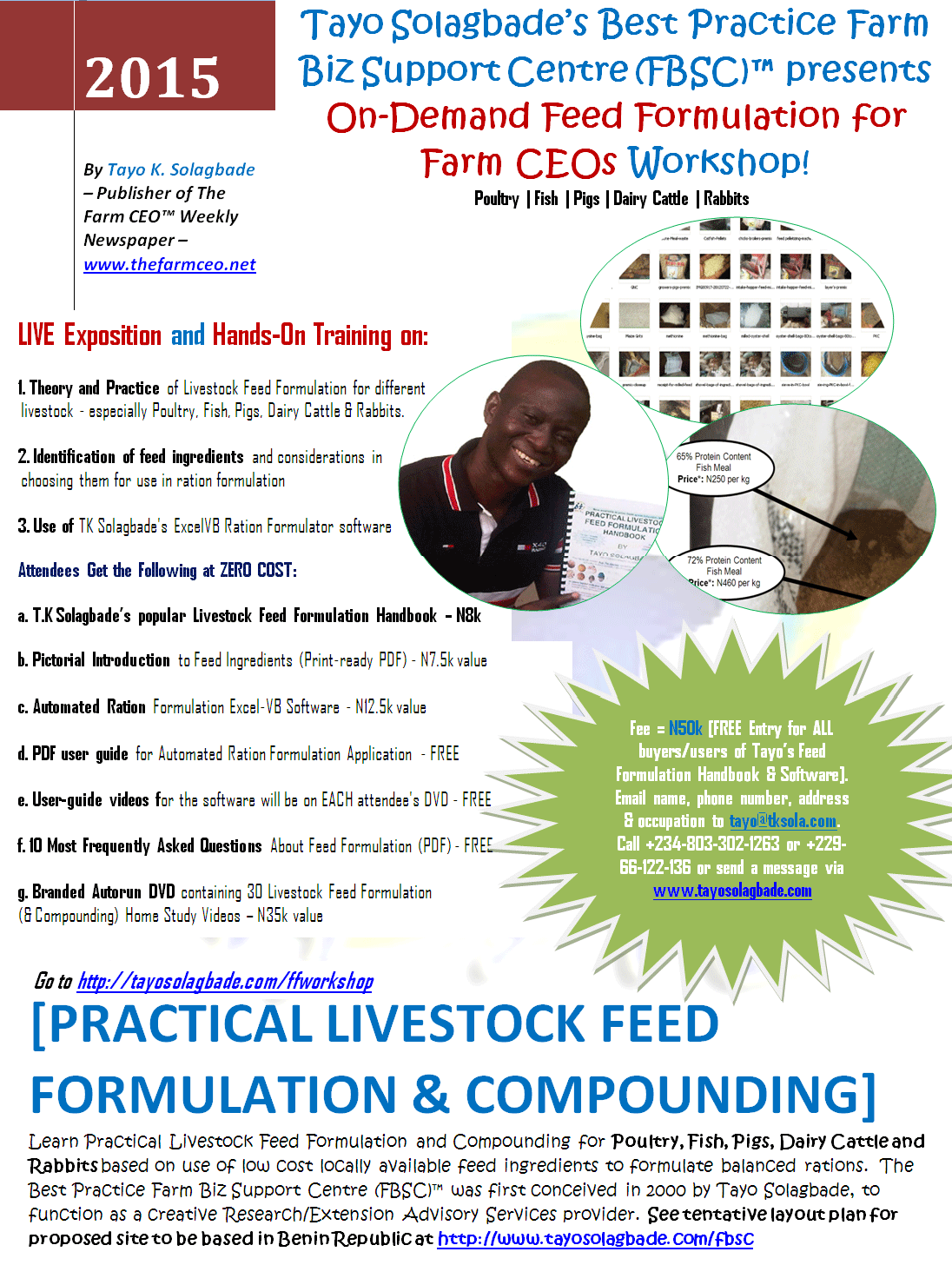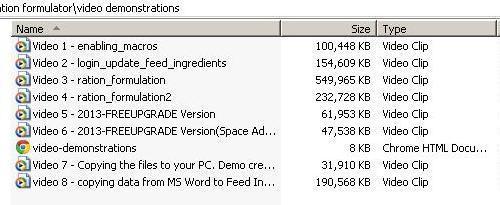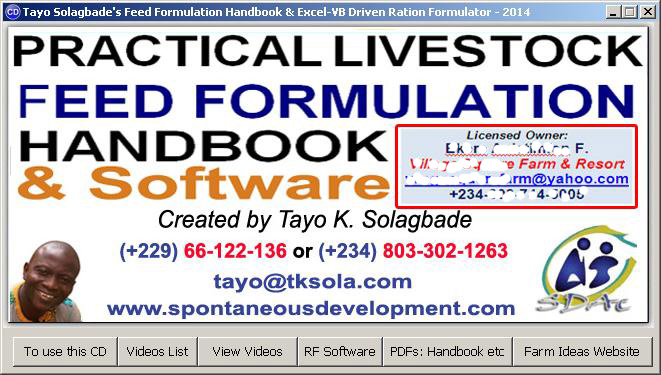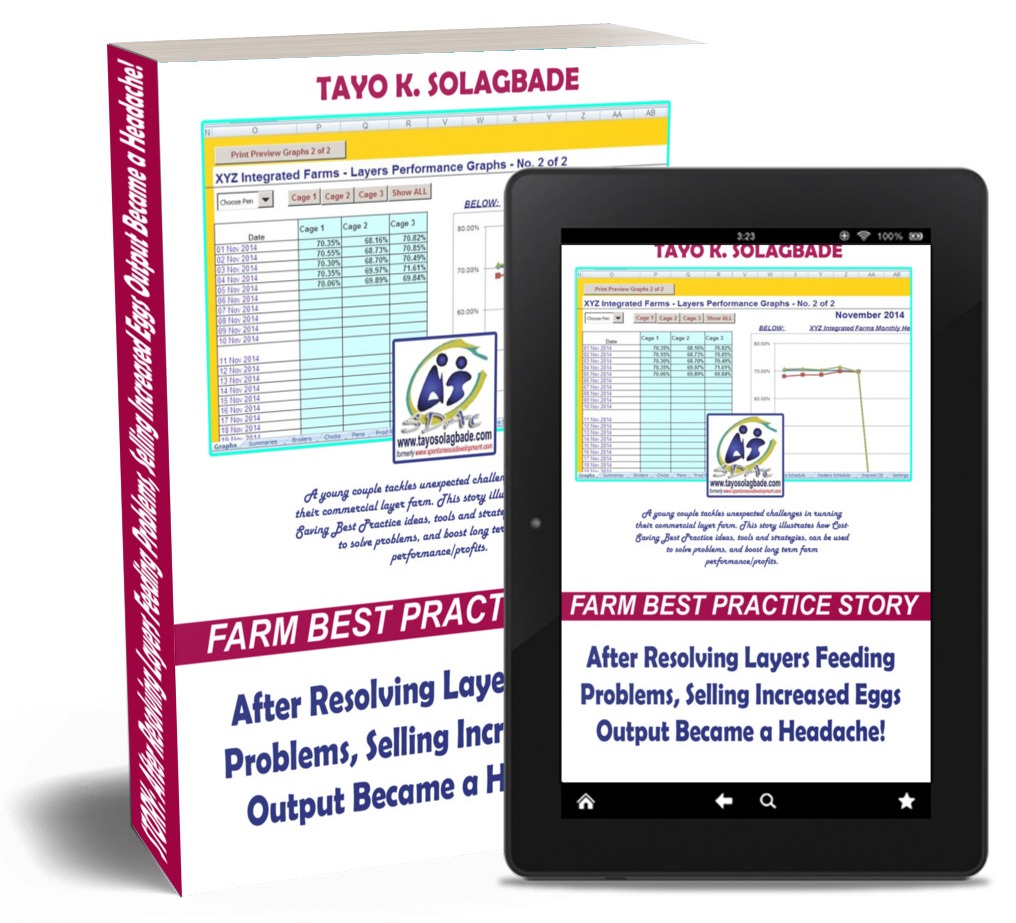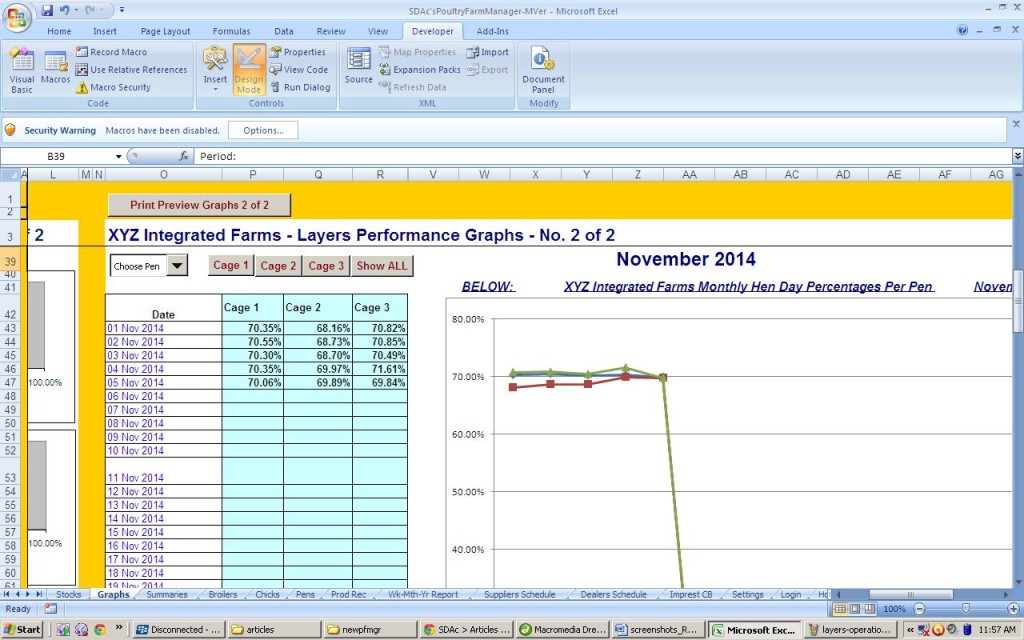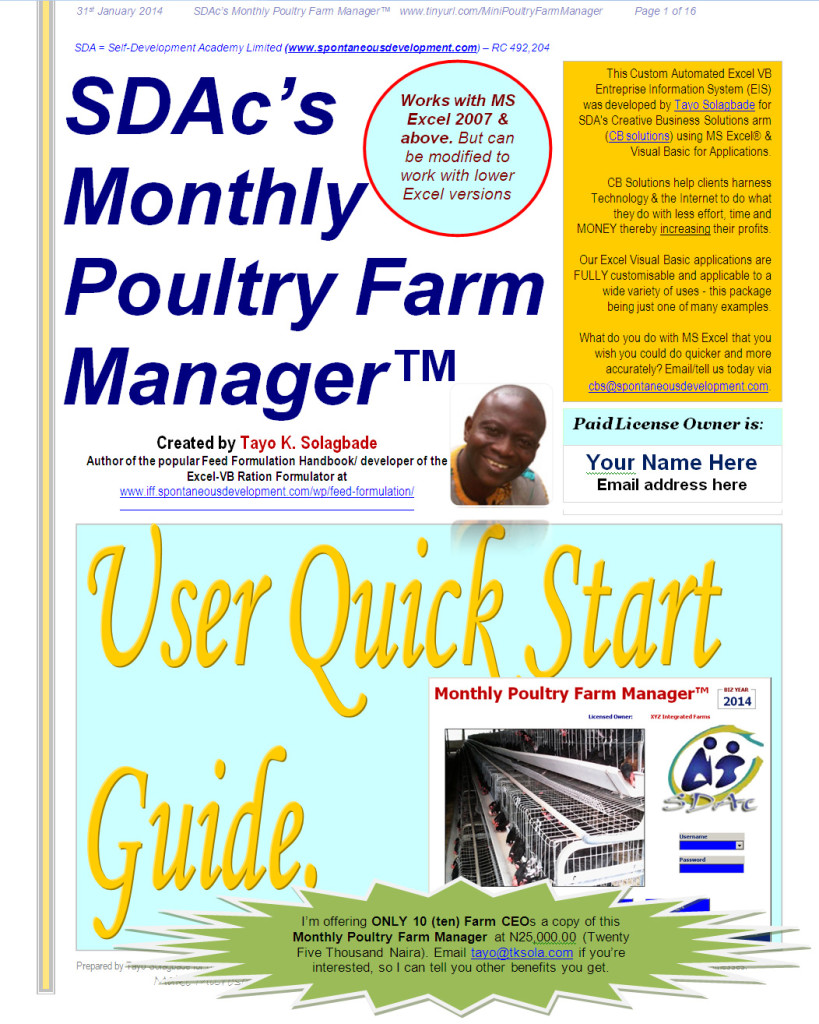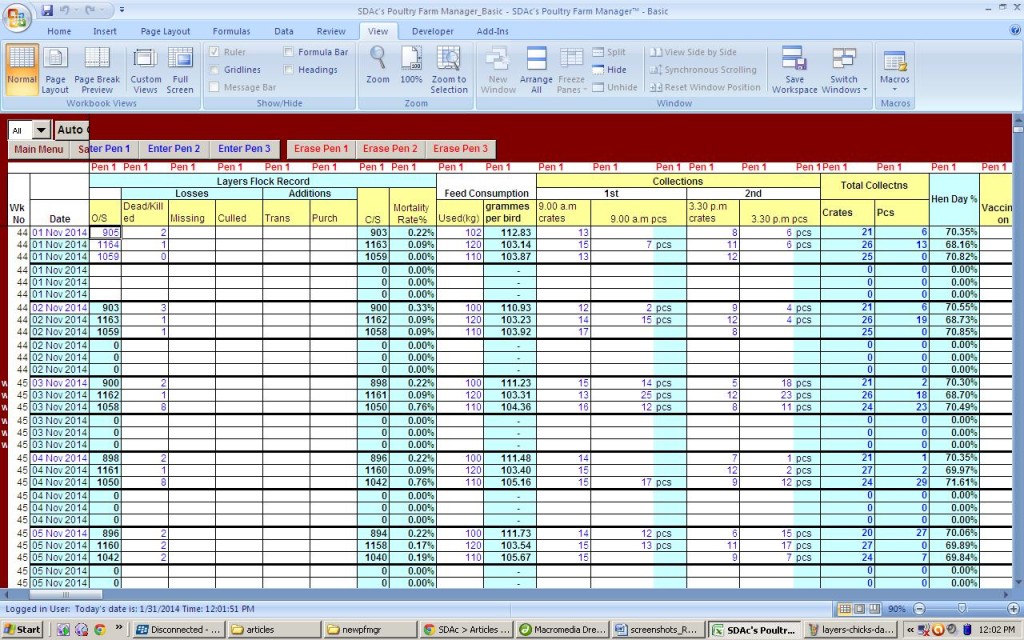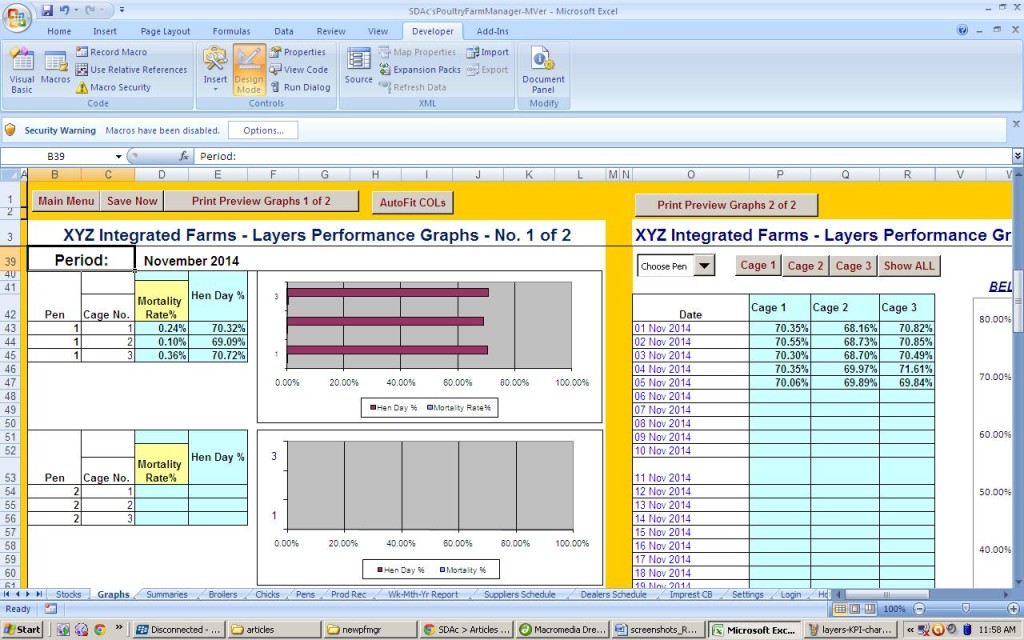On 2012-04-17 at 23:15:18, Obinna N., a Mechanical Engineer with a well known multinational oil company wrote me saying: “i have a plot of land and i have just raised 2 million naira to start cat fish farming please i need to succeed, i need your help in every way possible thanks”
But I Never Saw That Message UNTIL this Morning: 2 Years Later!
I was reviewing entries in my website contact form enquiries database (some call it "Data Mining"), when I noticed his words.
To this moment, it baffles me that I actually missed such an emphatic message.
And I felt particularly bad, that despite the tone of the message, I’d not been able to reply the author.
So, I placed a call to him from my mobile phone this morning, and when he picked up, we had the following conversation:
I said “Good morning. My name is Tayo Solagbade. Am I speaking with Mr. Obinna N.? “
He replied (in a guarded tone) “Yes. How can I help you?”.
“Do you remember visiting fishfarmingbusiness.com in April 2012, and then coming to my Farm Business ideas website (www.iff.spontaneousdevelopment.com) from there, to send me a message about a catfish farm you planned to start?” I asked
His tone softened as he said “Yes I do.”
I went on “Did I ever get back to you with a reply at all?”
“No, I don’t believe you did.” he answered.
At that point, I told him how I’d just noticed his message for the first time, while reviewing my website contacts database.
I then asked if he had been able to start the business as planned.
He confirmed that he had, adding that the farm had 12 ponds, but that he’d so far only been able to stock 8 of them.
In response to my subsequent query, he confirmed that he’d been raising the catfish to table size, in the 8 ponds.
For the remaining 4 ponds, he told me he was trying to raise funds towards stocking them.
He also mentioned that he had started a hatchery, but for now engaged the services of an external resource person, to do the hatching for him.
He however added that he had plans to learn to do the hatching himself in the near future.
Speaking with him, I sensed that this gentleman was very serious minded about the venture he had started.
And that made me resolve to offer what little help I could, to help him progress towards his goals.
So I told him I knew a financial consultant who might be able to help him with raising funds that he needed.
I however emphasized that I was making no promises whatsoever, that this person would succeed in getting him the needed funding.
He said he would be interested in finding out what the person could do for him.
So I told him I’d send more details in an email later on.
I also noted that I would include other information I felt he might find useful.
About 1 hour ago, I sent him the promised e-mail message.
After doing that, it occurred to me that many other farm business owners, could find what I’d told him useful as well.
Some might even wish to gain access to the contact details of the financial consultant I sent him.
That’s what made me decide to publish excerpts from that message as part of THIS blog post.
If you’re a farm business owner, and after reading what follows below, would like me to send you the two JPEG images of the financial consultant’s business card, and flyer, just get in touch with me via tayo at tksola dot com.
NB: If you have NOT someone previously made contact with me as a farm business owner, I WILL require you to FIRST of all call me on +229-66-122-136, so I can ask you a few questions.
===Email Message Excerpt Begins===
Dear Obinna,
Re: Your Request of 2012-04-17 at 23:15:18 On My Website
Our phone discussion about one hour ago refers. It still baffles me that I never saw your web contact form request (see my email), but it was great to learn you’ve started, and are doing fairly well.
I’m also glad that I can offer some information that may prove useful towards helping you take your business to the next level. Especially regarding raising funds to stock your remaining ponds.
PART 1:
See JPEG images of Mr. Adeniyi E.’s complimentary card and flyer attached to my email.
I’ve known him since April 2007, when he convinced Mr. Temitayo F., (his boss, at the time, and MD of ….Hospital…in …Lagos) to engage my services.
Over the years, we’ve gotten quite close, especially in the process of helping him and his team, make use of my Payslip Generator software, in preparing salaries for over 100 staff of the hospital.
I got to witness the results of how he REPEATEDLY, helped the company raise funds from their hospital’s bankers (and how he used their cash flow income to successfully pay it back!), by leveraging his inside knowledge and expertise as a seasoned auditor, and financial expert.
Indeed, when he departed to start his consulting on… he left them a brand new ambulance (purchased via yet another bank facility he helped the hospital secure), as a parting gift!
In 2008, he even helped me setup an accounts system, for a manufacturing client I built a custom production management software for in Surulere.
This is what informs my confidence in referring you to him.
However, like I have told you, understand that you MUST do your own DUE DILIGENCE, and also take responsibility for the outcome of your choosing to act on the information I supply.
NB: I have NOT spoken to Mr. Adeniyi E., about you. I assume you’ll let him know I gave you his details. But if you want me to speak with him first, let me know. It would be my pleasure :-))
PART 2:
Below, I offer links to articles I’ve written, that I believe you may find useful (some are published as Guest Posts on a popular ago-business website – www.africabusinesscommunities.com):
A. To prepare your farm towards getting a loan/grant facility.
B. To pursue ways to cut your feeding costs.
C. To setup a sound farm operations data recording and report generation system to aid timely, and cost effective planning/decision making.
====Begins====
1. Five Powerful Tools for Accurately Measuring Your (Farm) Business’ Health
http://www.africabusinesscommunities.com/index.php/rss-abc-blogs/200894-5-po
2. Five Proven Ways to Boost Farm Profits without Raising Prices – By Tayo K. Solagbade
3. Reducing Catfish Feeding Costs (A Secret Weapon) – Part 1 of 2 – By Tayo K. Solagbade
http://www.tinyurl.com/tksBPArticle3
4. Reducing Catfish Feeding Costs (A Secret Weapon) – Part 2 of 2 – By Tayo K. Solagbade
http://www.tinyurl.com/tksBPArticle4
5. Why You Need a Best Operating Process Management System (BOPMS) for Your Farm Biz
http://spontaneousdevelopment.com/pfmgr.html
http://www.tinyurl.com/tksBPArticle5
6. To Succeed, Make Working in Your (Farm) Business More Attractive to Employees
http://www.tinyurl.com/tksBPArticle6
7. Practical Feed Formulation (& Compounding) Home Study Video Series – Now Available!
http://www.tinyurl.com/tksBPArticle7
====Ends====
I wish you well in your venture, and do let me know if there is any other way I can be of service :-))
With kindest regards,
Tayo
===Email Message Excerpt Begins===
Final Words: Do You Need Funding For Your New, or Existing Farm Business?
If yes, I feel a need to point out that you’ll need to have good farm operations and financial records.
Without those, it will be near impossible for any funds source to accurately evaluate your business for eligibility. All farm operations or production data must be diligently recorded daily, for all aspects of your business.
That is what your financial adviser will refer to, in order to help you prepare a loan package.
If you’ve not been keeping accurate and regular records, you need to start now, before you seek funding support.
And that’s why the articles I listed in the above message, about the need to adopt Best Practices in your farm business, are important.
Make time out to read them.
One of them even explains Five Powerful Tools for Accurately Measuring Your (Farm) Business’ Health.
Those are Financial Key Performance Indicators (KPIs) that can be used by investors, or financiers, to decide whether or not to award your farm business, the funding you seek.
Goodluck!

